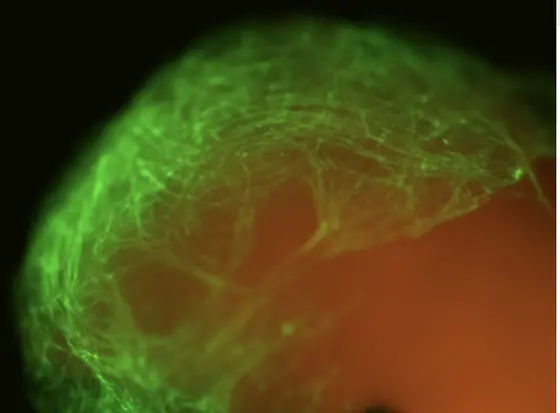Glioblastoma is the most malignant and most dangerous of all brain tumors. Numerous studies have shown the great heterogeneity of glioblastoma cells. However, the now extensive molecular knowledge has so far made little contribution to improving the treatment of the disease.
In order to develop effective targeted therapies, researchers must first understand exactly which genetic mutations are present in the cancer cells and what effects these have on the cellular signaling pathways. Such investigations require models that can be used to simulate the processes and test possible drug candidates. The frequently used PDX models, in which patient-specific tumor cells are transferred to mice, are not very suitable for investigating the influence of individual mutations, as they have a very heterogeneous genetic background. This also applies to the classic tumor organoids cultivated from patient cells.
Scientists led by Haikun Liu at the DKFZ, together with colleagues from Chinese research institutions, have devised a solution: They use organoid models grown from human induced pluripotent stem cells (iPSC). The researchers call their constructs “GLO“ - for (Laboratory Engineered) Glioblastoma like Organoids. In order to mimic the properties of glioblastomas, the tumor suppressor genes that are typically lost in patient glioblastomas were precisely switched off in the stem cells using the CRISPR-Cas gene scissors. The scientists were able to generate a set of GLOs fully resemble major mutation spectrums in glioblastoma patients.
“The major known molecular subtypes of glioblastoma are primarily defined by RNA expression or DNA methylation pattern, and there is no clear correlation between genetic mutations and molecular subtypes,“ explains Haikun Liu. “The GLOs are ideal for deciphering the interactions between cancer-specific gene mutations and molecular characteristics.“
For example, his team was able to use the GLOs to demonstrate how the mutation in the NF1 gene, which is common in glioblastomas, is the cause of the development of the mesenchymal subtype of the tumors, which is characterized by special immunological properties. The researchers also discovered that lipid metabolism, in particular phospholipid metabolism, is activated during the development of brain tumor organoids. This is consistent with the researchers' previous finding of activation of lipid reprograming in glioblastoma stem cells. The changes in lipid metabolism proved to be a characteristic hallmark of glioblastomas and bring a number of previously unnoticed target structures into focus for new therapeutic approaches. For example, the researchers were able to show that the lipid-lowering drug lomitapide significantly inhibits the growth of certain GLOs.
“Compared to other organoid techniques, LEGOs have the advantage that they are derived from an induced pluripotent stem cell with precisely defined mutations. They have proven to be a suitable model to find out how genetic mutations determine the functional heterogeneity and drug sensitivity of glioblastoma cells,“ explains DKFZ researcher Liu.
He and his team want to further assemble different GLOs and integrate other cell types into LEGOS, such as immune cells and/or normal neural cells, in order to better simulate the situation in glioblastoma in the future.
Changwen Wang, Meng Sun, Chunxuan Shao, Lisa Schlicker, Yue Zhuo, Yassin Harim, Tianping Peng, Weili Tian, Nadja Stöffler, Martin Schneider, Dominic Helm, Youjun Chu, Beibei Fu, XiaoliangJ in, Jan-Philipp Mallm, Moritz Mall, Yonghe Wu, Almut Schulze, Hai-Kun Liu
A multidimensional atlas of human glioblastoma-like organoids reveals highly coordinated molecular networks and effective drugs
npj Precision Oncology (2024) https://doi.org/10.1038/s41698-024-00500-5
